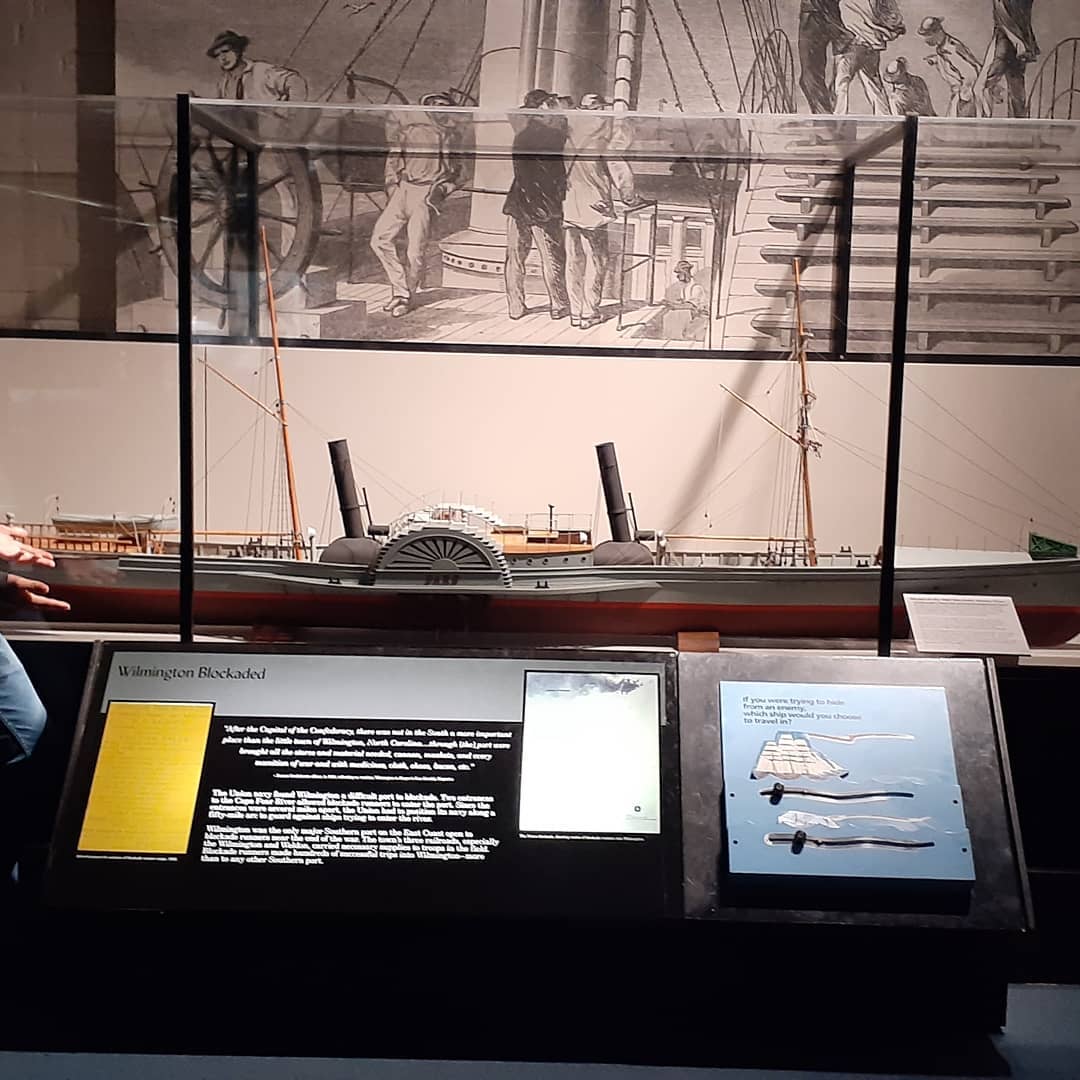Scuba Diving magazine Readers Choice Awards consistently rank North Carolina as a top spot for U.S. wreck-diving. The coastal waters surrounding Wilmington and its island beaches afford a bevy of shipwrecks that interpret the region’s maritime heritage. In this two-part series, Dr. Gordon P. Watts, Jr. (N.C.’s first underwater archaeologist) takes us on a dive back in time to explore sunken blockade runners.
DIVING INTO HISTORY OFF THE COAST OF WILMINGTON’S ISLAND BEACHES: THE CONDOR, NORTH CAROLINA’S FIRST HERITAGE DIVE SITE
For half-a-century I have been professionally engaged in researching, locating, and investigating North Carolina's shipwrecks, many of which lie beneath the waters surrounding Wilmington and its island beaches. For anyone interested in “diving into history,” the Atlantic waters in this area provide one of the most unique concentrations of shipwrecks from 1861 to 1865 and can be accessed on a diving excursion.
Blockade Runners: Historical Perspective
During the War Between the States, the Port of Wilmington was possibly the most important Confederate connection with Europe and particularly Great Britain. Consequently, the United States focused a considerable amount of Navy resources on enforcing the Union blockade off the inlets that provided access to the Cape Fear River. With inlets north and south of Bald Head Island, blockade runners—vessels engaged in maintaining the blockade—had the option to choose the best avenue of entering and departing the Cape Fear. Powerful Confederate fortifications protected those inlets and the blockade runners that passed through them.
Anglo-Confederate vessels running the blockade with arms, ammunition and supplies maintained the connection with Europe and Great Britain until Fort Fisher at New Inlet, and Fort Caswell at the mouth of the Cape Fear River were captured only months before General Robert E. Lee was forced to surrender the Army of Northern Virginia on April 9, 1865. Although vessels running the blockade became progressively more powerful and fast, the Union blockade at Cape Fear tightened throughout the war. As a consequence, the New Inlet area off Fort Fisher is the location of a concentration of wrecked blockade runners and a union steamer loaded with 215 tons of powder that exploded to facilitate capturing Fort Fisher.

Let’s dive into the history of the Condor, North Carolina’s first Heritage Dive site:
Condor – N.C.'s first Heritage Dive Site
The steamer Condor is one of several blockade runners sunk off Fort Fisher, just south of Kure Beach, that have been located and investigated by underwater archaeologists. Built and launched in the spring of 1864, Condor and its sister ships (Falcon, Flamingo and Ptarmigan) were
designed for blockade-running and were readily identified by three distinctive raked funnels forward of the paddle wheels. Condor proved to be one of the fastest British built blockade runners. However, during her maiden voyage, Condor ran aground on Caroline Shoals attempting to avoid the recent wreck of the blockade runner Night Hawk. Aboard Condor was Confederate patriot and accomplished spy Rose O'Neal Greenhow who was drowned on October 1, 1864 attempting to reach shore at Fort Fisher when the ship's boat she was in capsized. Mrs. Greenhow is buried in Oakdale Cemetery in Wilmington.
In 2017 Condor was designated as North Carolina's first Heritage Dive Site. Mooring buoys were constructed to facilitate anchoring at the wreck site and waterproof slates were produced by underwater archaeologists John W. “Billy Ray” Morris and Gregory Stratton to assist divers in identifying features of the wreck.
The most rewarding dives on Condor, like virtually all blockade runners, is closely related to the fortune of finding good visibility at the site as documented in images and videos provided by the N.C. office of State Archaeology.
Divers and history buffs can learn more about the history of more dive-worthy blockade runners that sank off New Hanover County’s coastline.
Important safety notes:
Since wreck-diving is for experienced divers, visitors are encouraged to contact local dive shops and outfitters. All divers should follow safe scuba-diving practices, never dive or swim alone, and always check weather/surf conditions in advance. Shipwrecks along the NC coast are managed by the N.C. Underwater Archaeology Branch. While diving on the wrecks is open to the public, no disturbance of a shipwreck or recovery of anything is legal without a permit from the state.


